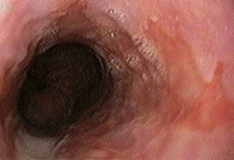Previously, histamine-2 receptor antagonist (h2ra) therapy was recommended as the initial treatment for esophagitis associated with gastroesophageal reflux disease (gerd); however, subsequent studies of cost-effectiveness and symptomatic relief suggested that proton pump inhibitors (ppis) (eg, omeprazole 20 mg/day, pantoprazole 40 mg/day, or. Reflux esophagitis treatment guidelines. Treatment of gastroesophageal reflux disease (gerd) involves a stepwise approach the goals are to control symptoms, to heal esophagitis, and to prevent recurrent esophagitis or other complications the treatment is based on (1) lifestyle modification and (2) control of gastric acid secretion through medical therapy with antacids or ppis or.
reflux esophagitis treatment guidelines
Reflux esophagitis is an esophageal mucosal injury that occurs secondary to retrograde flux of gastric contents into the esophagus clinically, this is referred to as gastroesophageal reflux disease (gerd) updated guidelines for the diagnosis and treatment of gastroesophageal reflux disease the practice parameters committee of the. Acg clinical guideline: diagnosis and management of barrett’s esophagus recent population studies suggest that gastroesophageal reflux disease (gerd) is increasing in prevalence, both in the united states and worldwide (1,2). modalities for be detection, rationale and methods for surveillance, and available treatment modalities. Many clinicians routinely biopsy the esophagus in patients with reflux-type symptoms to look for eoe in the setting of an endoscopy that does not reveal erosive changes. unfortunately, differentiating gerd from eoe using only biopsy is difficult and risks making a diagnosis and instituting treatment without supportive data..


0 comments:
Post a Comment